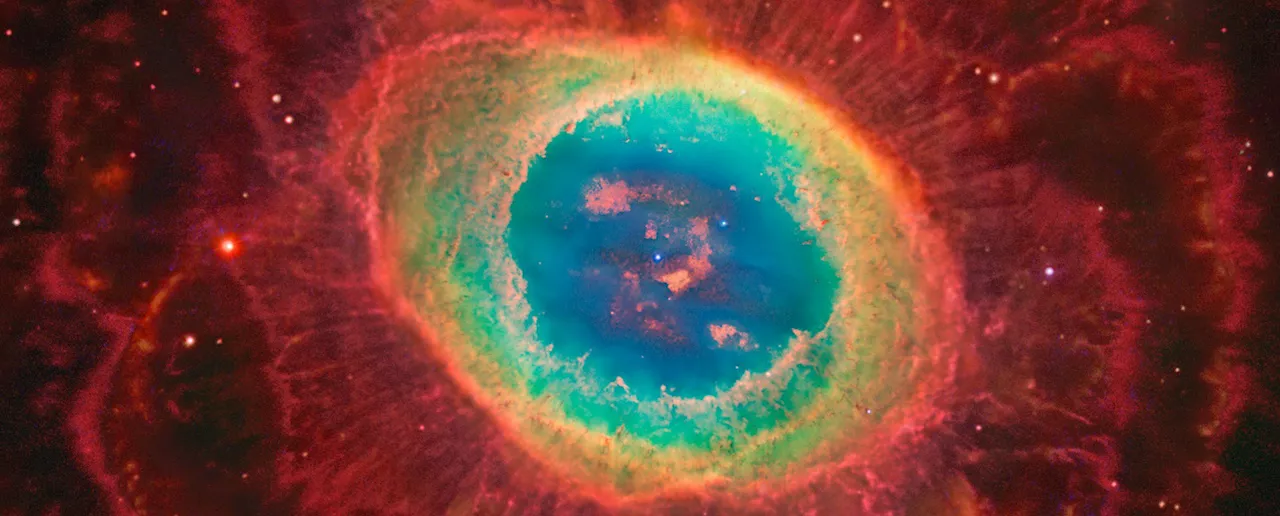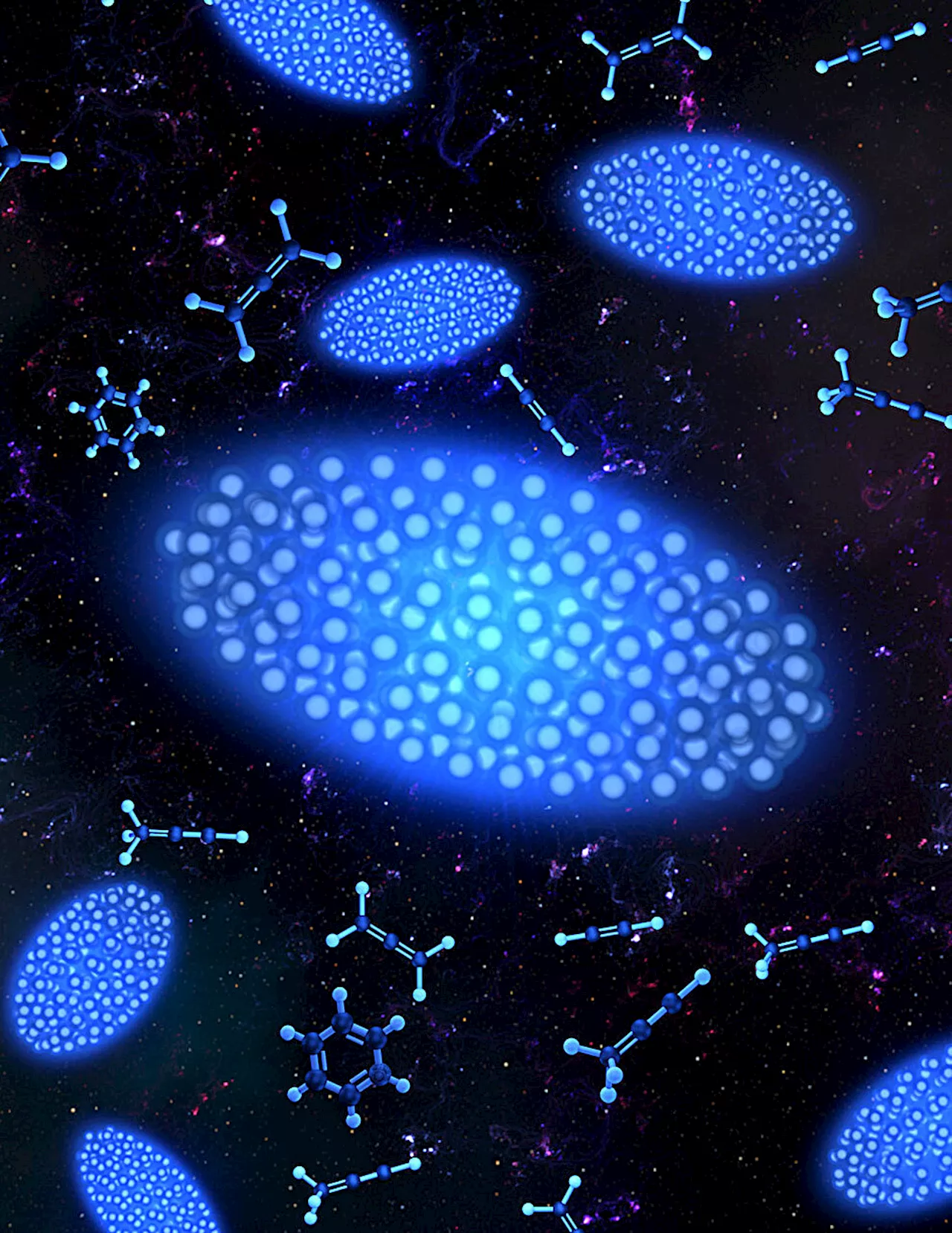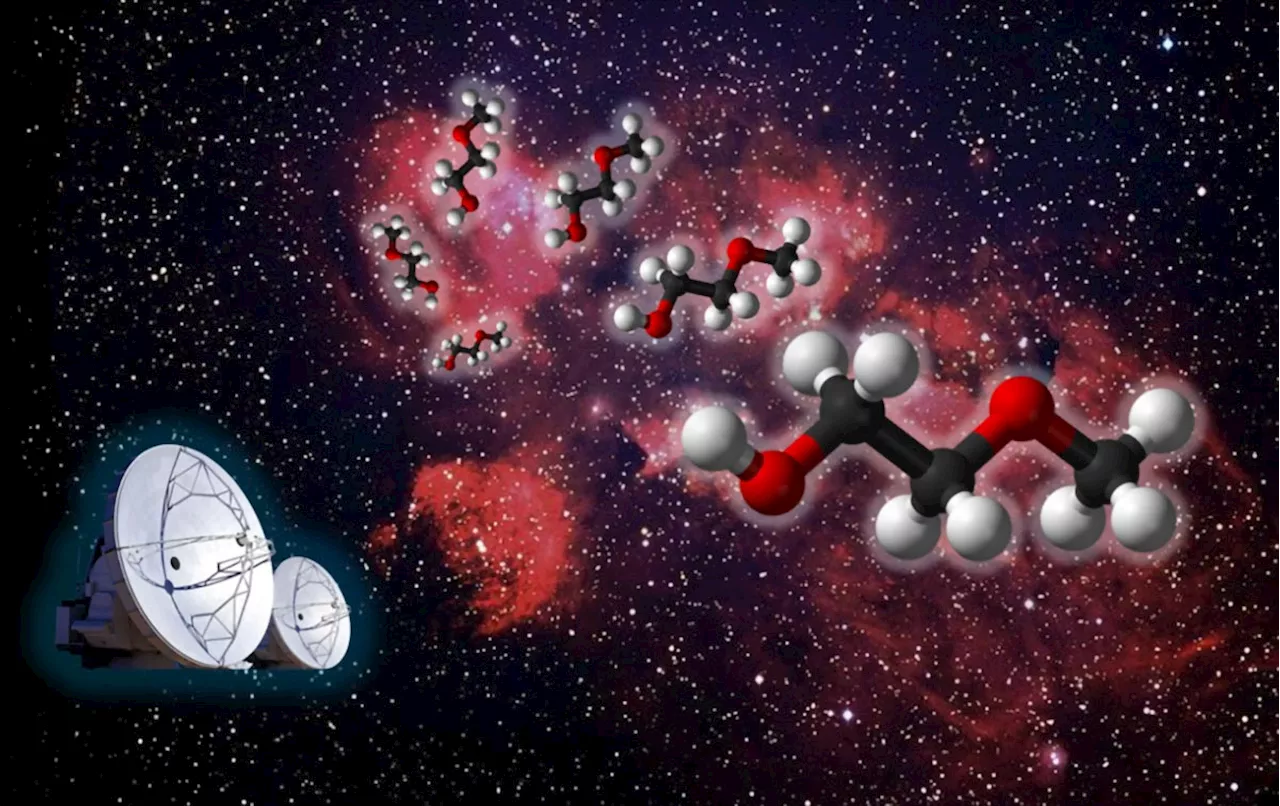Science, Space and Technology News 2024
Scientists detected 2-Methoxyethanol in space for the first time using radiotelescope observations of the star-forming region NGC 6334I. Credit: Courtesy of the researchers.’s discovery of 2-methoxyethanol in space reveals new insights into the development of molecular complexity in space during star formation.
“There are a number of ‘methoxy’ molecules in space, like dimethyl ether, methoxymethanol, ethyl methyl ether, and methyl formate, but 2-methoxyethanol would be the largest and most complex ever seen,” says Fried. To detect this molecule using radiotelescope observations, the group first needed to measure and analyze its rotational spectrum on Earth.
United Kingdom Latest News, United Kingdom Headlines
Similar News:You can also read news stories similar to this one that we have collected from other news sources.
 A 'cosmic glitch' in gravity: New model may explain strange behavior on a cosmic scaleA group of researchers at the University of Waterloo and the University of British Columbia have discovered a potential 'cosmic glitch' in the universe's gravity, explaining its strange behavior on a cosmic scale.
A 'cosmic glitch' in gravity: New model may explain strange behavior on a cosmic scaleA group of researchers at the University of Waterloo and the University of British Columbia have discovered a potential 'cosmic glitch' in the universe's gravity, explaining its strange behavior on a cosmic scale.
Read more »
 Cosmic Enigma: Astronomers Have Explained the Mystery of the Fullerenes in SpaceScience, Space and Technology News 2024
Cosmic Enigma: Astronomers Have Explained the Mystery of the Fullerenes in SpaceScience, Space and Technology News 2024
Read more »
Hubble Space Telescope marks 34 years with new portrait of a ‘cosmic dumbbell’Editor&8217;s note: Sign up for CNN’s Wonder Theory science newsletter. Explore the universe with news on fascinating discoveries, scientific advancements and more.
Read more »
 Cosmic fountain is polluting intergalactic space with 50 million suns' worth of materialRobert Lea is a science journalist in the U.K. whose articles have been published in Physics World, New Scientist, Astronomy Magazine, All About Space, Newsweek and ZME Science. He also writes about science communication for Elsevier and the European Journal of Physics. Rob holds a bachelor of science degree in physics and astronomy from the U.K.
Cosmic fountain is polluting intergalactic space with 50 million suns' worth of materialRobert Lea is a science journalist in the U.K. whose articles have been published in Physics World, New Scientist, Astronomy Magazine, All About Space, Newsweek and ZME Science. He also writes about science communication for Elsevier and the European Journal of Physics. Rob holds a bachelor of science degree in physics and astronomy from the U.K.
Read more »
 Q&A: Cosmic rays, space weather and larger questions about the universeWith the naked eye, you can't see the weather in space, or feel the cosmic rays beaming down to Earth—but they can impact critical systems like our climate, computer connectivity, communications and even our health.
Q&A: Cosmic rays, space weather and larger questions about the universeWith the naked eye, you can't see the weather in space, or feel the cosmic rays beaming down to Earth—but they can impact critical systems like our climate, computer connectivity, communications and even our health.
Read more »
 Cold Coulomb crystals, cosmic clues: Unraveling the mysteries of space chemistryWhile it may not look like it, the interstellar space between stars is far from empty. Atoms, ions, molecules, and more reside in this ethereal environment known as the Interstellar Medium (ISM). The ISM has fascinated scientists for decades, as at least 200 unique molecules form in its cold, low-pressure environment.
Cold Coulomb crystals, cosmic clues: Unraveling the mysteries of space chemistryWhile it may not look like it, the interstellar space between stars is far from empty. Atoms, ions, molecules, and more reside in this ethereal environment known as the Interstellar Medium (ISM). The ISM has fascinated scientists for decades, as at least 200 unique molecules form in its cold, low-pressure environment.
Read more »
